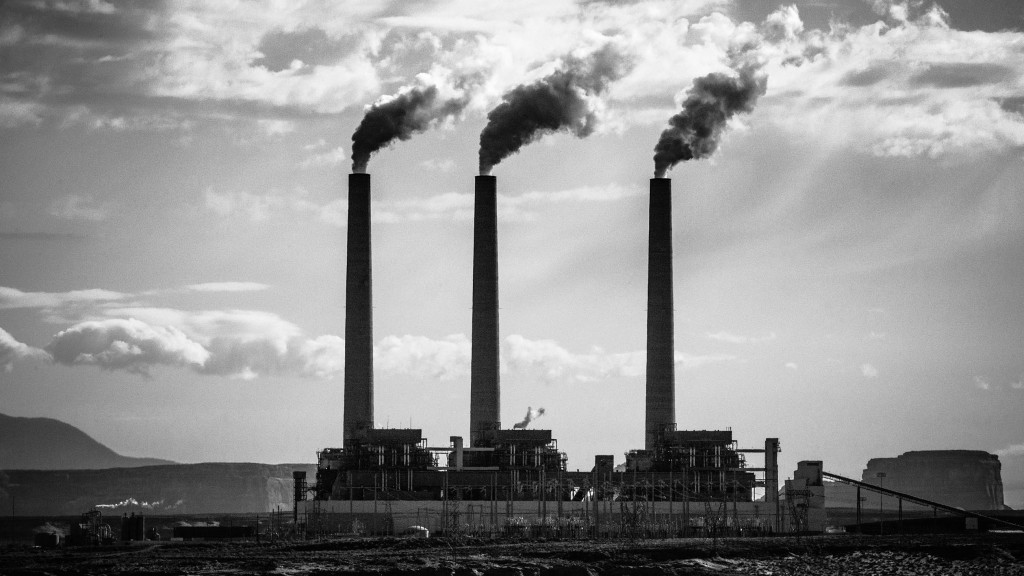Coal Concern Faces Delisting from NYSE

2250 megawatt coal-fired power plant
When the coal market crashed a few years ago, three of the four large coal concerns in Wyoming laid off huge percentages of their workforces, filed for Chapter 11 bankruptcy and survived via reorganization, leaving Cloud Peal Energy alone in choosing to continue on course. But, in the face of an “untenable coal market” (per this article), it saw its performance and its stock price crash.
From the article: Cloud Peak Energy’s common stock has been trading below $1 per share at the close of the market for 30 days in a row, prompting a notification last Wednesday that the company had six months to remedy its low stock price or it would be delisted from the NYSE. The company, that employed about 850 miners in Wyoming as of September, recently announced that it was considering selling itself — among other options — in the face of an untenable coal market. Cloud Peak was trading at 35 cents late Thursday.
A reminder of two things:
• Humankind benefited greatly from the fossil fuel industry for more than a century. Productivity skyrocketed, along with health, life expectancy, and convenience. There is very little in our lives that make them longer and more enjoyable that didn’t come, directly or indirectly, from coal, oil, and natural gas.
• Now, the time has come to recognize the horrific environmental consequences of burning fossil fuels and to adjust our approach to energy accordingly, via a measured transition to renewables and, to the degree required, nuclear.
2019 is a great time to make the commitment.

Craig,
Good grief, you really have a talent for find obscure sources of reference, don’t you?
The article you are quoting is from an obscure free lance journalist writing a re-hash story in an even more obscure website for a small town radio station.
Okay, so back in the land of reality;
Cloud Peak Energy Inc. (NYSE:CLD) is one of the largest U.S. coal producers. It also holds a record for safety, environmental programs and conservative financial decisions.
Cloud Peak Energy mines low sulfur, subbituminous coal and provides logistics supply services. The Company owns and operates three surface coal mines in the PRB, the lowest cost major coal producing region in the nation. Antelope and Cordero Rojo mines are located in Wyoming and the new Spring Creek Mine in Montana. In 2017, Cloud Peak Energy sold approximately 58 million tons from its three mines to customers located throughout the U.S. and around the world
Cloud Peak Energy also owns rights to substantial undeveloped coal and complementary surface assets.
Coal Peak employs more than 1,300 total employees and supplies about 2% of US electricity.
Coal Peak’s stock price doesn’t reflect the true value of the company and is made up of number of unusual factors.
Coal Peak has suffered greatly from it’s production capacity dropping to 32 million tons down from 58 million tons, due in part to unexpected flooding in two mines.
The company is under going a number of restructuring measures to cut costs and boost productivity. The loss of domestic coal purchasers as aging coal fired power stations continue to close and increasing competition from natural gas, has made investment in coal increasingly difficult.
For those anti-coal proponents these difficult trading conditions are a cause of foolish celebration. With the loss of each domestic customer, it becomes more difficult to find investment for Clean Coal technology and more financially rewarding for Coal producers to simply export US coal.
The problem with this scenario, it it’s based on a number of fantasies.
1) Coal will be replaced by cheap “renewable power”.
2) Natural gas prices will always remain as cheap as today.
3) Building a new fleet of Nuclear power stations in the US.
4) De-industrializing the USA.
Major industries, skills and infrastructure such as the coal industry, are not easy(or cheap) to replace once allowed to collapse.
So far, the coal industry hasn’t asked for direct assistance from the US government, but a substantial number of energy and national security experts, including the DoE have become increasingly alarmed and are looking at various methods by which the Federal government can assist the industry.
As other nations have discovered, abandoning the coal industry is not only short-sighted, but impossible if national prosperity is to continue.
In the meantime, a number of interested parties are watching Coal Peak with hungry eyes as the any company with undervalued assets are certain to become take over targets.
The Federal administration is currently investigating plans to change the dynamic and use federal incentives, grants, subsidies and low interest loans, to encourage the development and construction of new domestic clean coal plants and utilities, to be owned and operated by US coal miners.
Truly environmentalists should abandon ill-informed opposition to clean(er0 coal technology, and at least consider the potential environmental gains to be achieved by the deployment of deploying this technology as quickly as possible.
Craig,
I suppose you didn’t notice that the most recent figures show a considerable upswing in US coal production directly resulting from an increase in natural gas prices. After averaging about $3 per million British thermal units in 2017, NG prices climbed to more than $4.80 in November and have mostly hovered between $3.50 and $4.50 this month.
Each time this occurs the demand for coal increases. The cost of coal gasification and liquidification technology is rapidly becoming economically viable with two new pilot plants already under construction. This process will allow coal to compete with natural gas in natural gas fired generation plants.
Although the environmental benefits of coal used in this way are not ‘clean’ as coal processed in high efficiency ultra-supercritical plants, the result still favour coal over gas in emission by 23%.
Unfortunately, Coal fired generation, like nuclear, both suffer from an image which has more to do with emotive ideological prejudice than any scientific analysis.